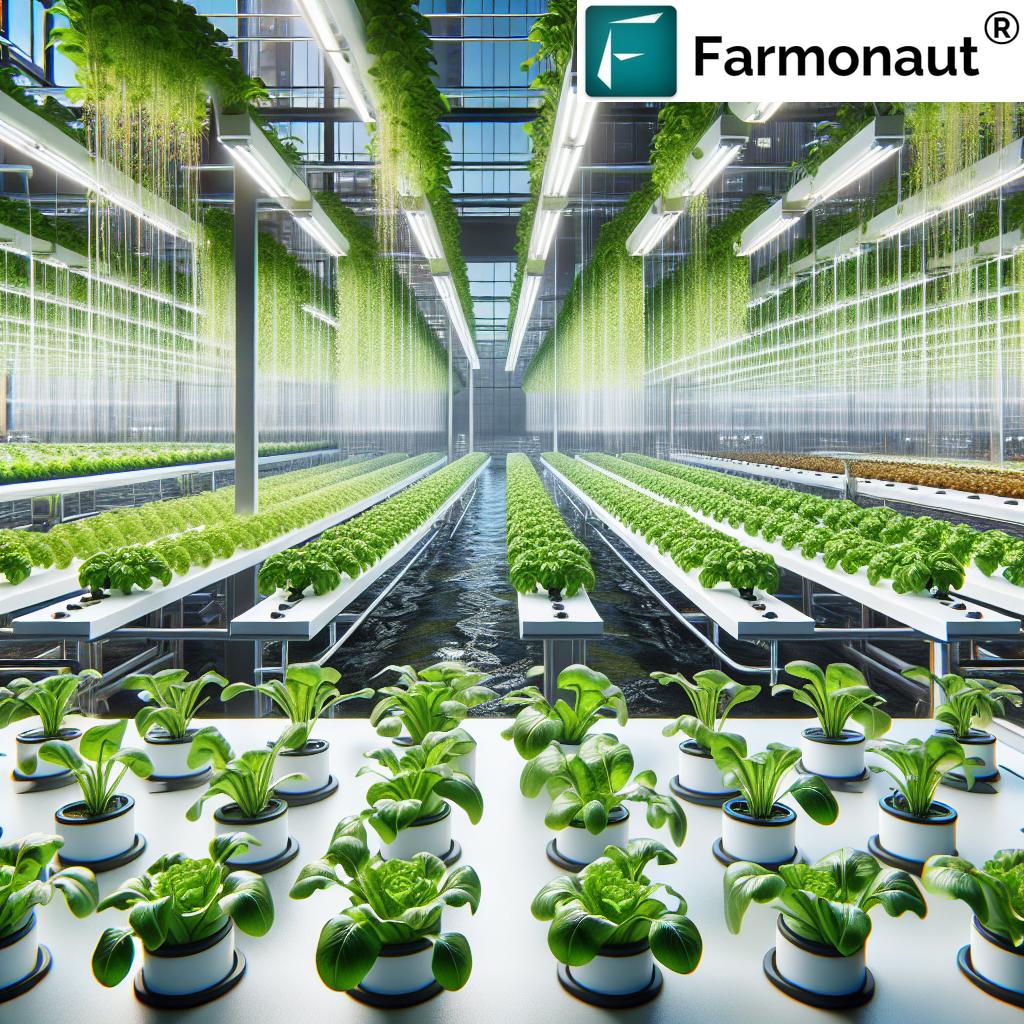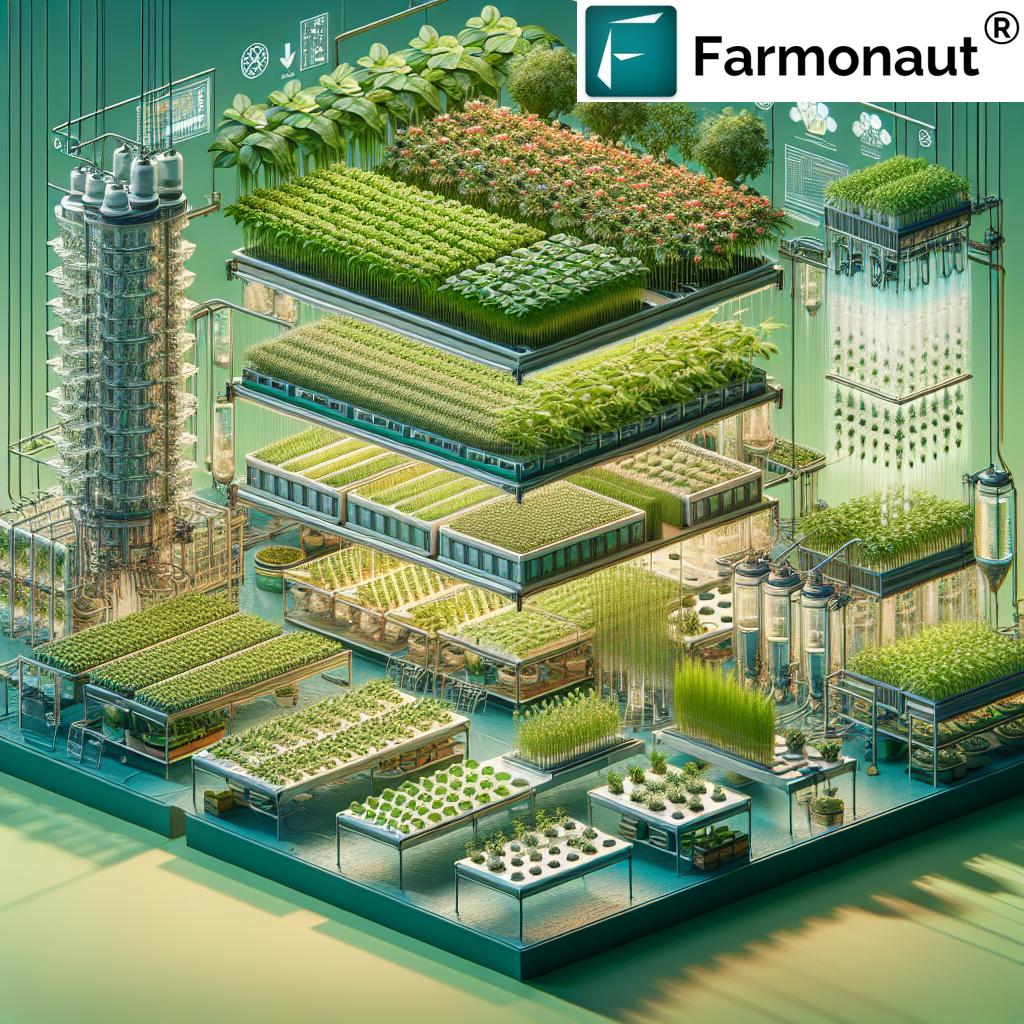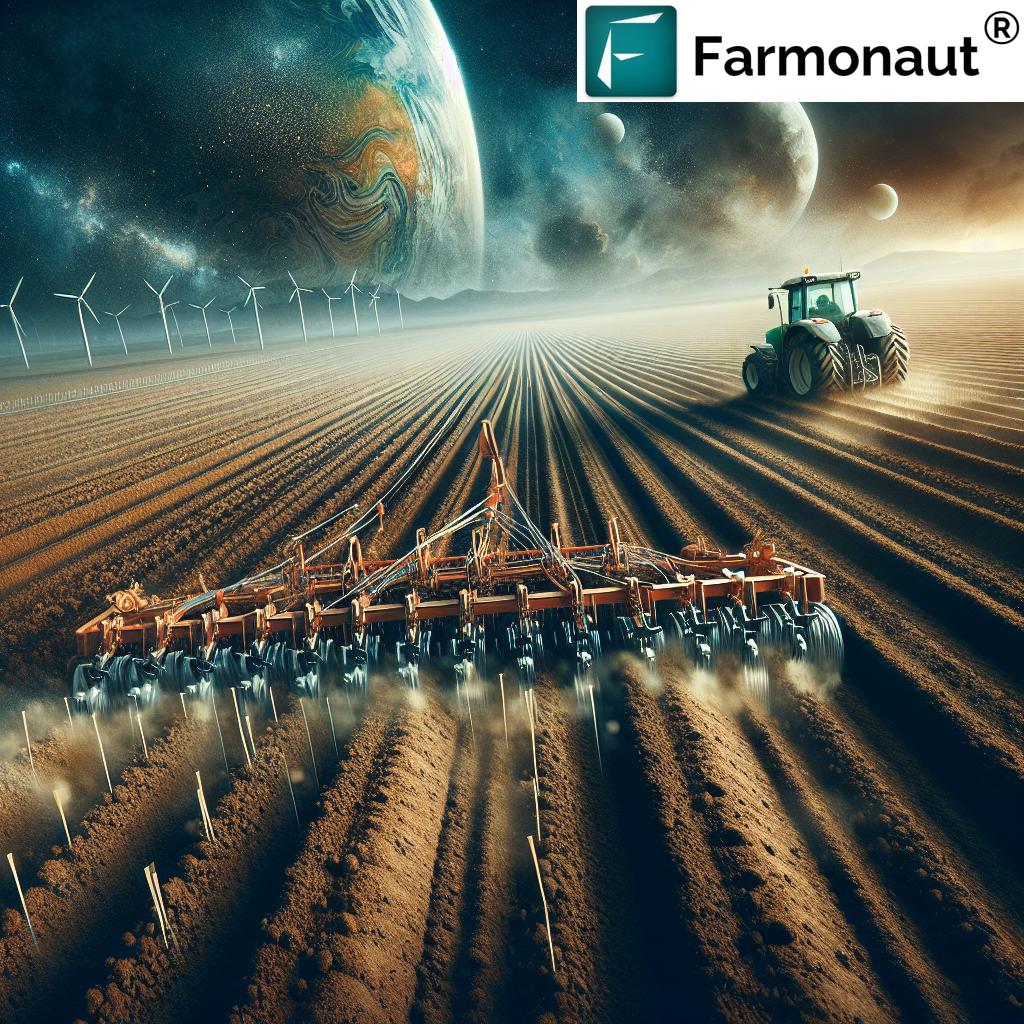Hydroponic System Hacks: 7 Surprising Yield Boosts
Historical Background of Hydroponic Farming and Soilless Cultivation
As we consider the technology & innovation theme driving modern agriculture, it’s important to appreciate that the origins of hydroponic farming date back centuries. Sir Francis Bacon introduced soilless cultivation in his 1627 work “Sylva Sylvarum,” and John Woodward’s 1699 experiments soon proved that plants could reliably grow with their roots suspended in water rather than soil. Fast-forward to the 20th century, and researchers like Julius von Sachs and Wilhelm Knop discovered the essential nutrients plants require—setting the stage for today’s advanced hydroponic systems that precisely manage water, oxygen, and nutrients.
This progression has enabled hydroponics—the cultivation of plants using water-based solutions—to become a cornerstone of sustainable food production, with hydroponic farming techniques now supporting highly efficient, scalable, and resource-saving indoor plant growing systems worldwide.
Types of Hydroponic Systems: From DWC to NFT and Beyond
To maximize the advantages of hydroponic farming, it’s crucial to understand the spectrum of hydroponic systems available. Each method offers unique solutions for nutrient delivery, oxygenation, and resource management. Let’s explore some foundational categories in soilless cultivation:
- Deep Water Culture (DWC): In this system, plant roots are directly suspended in aerated, nutrient-rich water. Efficient oxygenation and robust nutrient uptake make DWC ideal for producing vibrant greens and herbs.
- Nutrient Film Technique (NFT): An efficient and space-saving solution where a thin film of nutrient solution continuously flows past the suspended roots. Perfect for high-density leafy plant production under controlled environmental conditions.
- Ebb and Flow System (Flood and Drain): This versatile system cycles a nutrient-rich solution over plant roots and then drains it, providing alternating periods of nutrient uptake and oxygen access. It supports a variety of crops and growing media.
- Kratky Method: A minimal-equipment, passive system where roots are partially submerged in a hydroponic nutrient solution. Great for beginners and small-scale farming due to its simplicity and sustainability.
Through these innovative hydroponic farming methods, we can precisely control nutrient flow, oxygenation, and overall plant growth conditions—which is central to optimizing yields and operational efficiency.
Advantages of Hydroponic Farming: Why This Method Is Transforming Agriculture
By transitioning from soil-based agriculture to hydroponic systems, we unlock a host of strategic benefits for both small-scale urban hydroponics and large-scale indoor farming operations. Here are the most impactful advantages of hydroponic farming:
-
Resource Efficiency:
Hydroponics uses up to 90% less water compared to traditional agriculture. The closed-loop system recirculates hydroponic nutrient solution, reducing water costs and environmental impact. -
Year-Round Production:
By managing controlled environment agriculture—including lighting, humidity, and temperature—we can consistently produce fresh greens, herbs, and fruits regardless of season or location.
-
Space Optimization:
Vertical farming and dense stacking techniques use less land for more crop output, perfect for urban hydroponic growers and regions with scarce arable land. -
Reduced Use of Pesticides:
The soil-free method minimizes exposure to soil-borne pathogens and pests, supporting safe produce and reducing reliance on chemical pesticides. -
Increased Crop Yields:
With precise nutrient management and environmental control, plant growth cycles accelerate, and yields typically outpace traditional field farming.
Tackling the Challenges of Hydroponic Systems
Despite the evident promise of hydroponic farming, some challenges must be addressed to ensure sustainable food production:
-
Initial Costs & Investment:
Setting up hydroponic systems—including environmental controls, lighting, and irrigation—involves higher startup costs compared to traditional practices. -
Technical Knowhow:
Hydroponics requires a solid grasp of plant biology, nutrient management, system maintenance, and pest/disease prevention in soilless environments. -
Energy Consumption:
Indoor plant growing systems rely on artificial lighting and climate controls, which can increase energy use unless efficiency is prioritized. -
Reliance on Technology:
System malfunctions—like pump or power failures—can quickly jeopardize plant health. Robust monitoring and contingency plans are essential.
To overcome these challenges and fully leverage hydroponic farming’s potential, advanced digital farm management tools—like satellite and AI-powered monitoring from Farmonaut—can empower growers to detect issues early, optimize inputs, and sustain resource-efficient, data-driven operations.
Hydroponic Applications in Agriculture & Urban Environments
Hydroponic farming has diversified beyond rural fields to urban hydroponics and intensive commercial environments. Today, we see hydroponic applications in:
-
Commercial-scale Operations:
Large vertical farms produce leafy greens, herbs, tomatoes, peppers, and strawberries—catering to local and international produce markets with minimal land footprint. -
Urban & Indoor Farming:
Rooftops, warehouses, and even repurposed urban lots now host robust controlled environment agriculture operations. This reduces food miles and strengthens city food security. -
Education & Research:
Academic institutions use hydroponic systems to teach plant science, develop new nutrient solution formulas, and optimize yield efficiency for future farming.
As climate pressures and population density grow, hydroponic farming methods provide a scalable, efficient, and sustainable solution for global food production.
Hydroponic System Hacks: 7 Surprising Yield Boosts
Harnessing the advantages of hydroponic farming for maximum productivity goes far beyond basic system setup. Over years of hydroponic research and evolution, specific techniques and “hacks” have emerged that reliably boost yields, resource use efficiency, and sustainability in both small and large-scale operations. Here are the top seven hydroponic hacks, each explained in depth with practical focus:
1. Fine-Tune Your Hydroponic Nutrient Solution With Data-Driven Precision
- Why it works: Plants grown in soilless culture depend entirely on the nutrient solution for access to essential minerals and elements.
-
How to do it:
- Use sensors to precisely monitor pH and EC (electrical conductivity) in real-time.
- Track plant stage (vegetative vs. flowering) and adjust macro- and micro-nutrient balances accordingly.
- Leverage platforms like Farmonaut for remote crop health monitoring and AI-driven nutrition insights.
- Yield Boost: Optimized solutions accelerate growth—often increasing yields 10–15% versus generic “one size fits all” mixes.
2. Optimize Lighting Schedules for Veg & Fruit Phases
- Why it works: Artificial lighting in indoor plant growing systems allows us to create customized day/night cycles—directly influencing plant growth, flowering, and fruiting.
-
How to do it:
- Implement programmable LED lighting to simulate sunrise, midday, or sundown based on species needs.
- Use “blue-heavy” light spectrums during vegetative stages, and shift to “red-heavy” for flowering and fruit set.
- Monitor results with carbon footprinting tools to optimize energy use.
- Yield Boost: Can improve growth speed up to 20% and ensure dense, high-quality harvests.
3. Supercharge Oxygenation of Root Zone
- Why it works: Unlike soil-grown crops, hydroponic plants rely on dissolved oxygen in water to avoid “root rot” and fuel cellular respiration.
-
How to do it:
- Integrate high-efficiency air pumps, airstones, or oxygen diffusers in your reservoir.
- Monitor dissolved oxygen levels with digital meters—aim for >5 ppm for most crops.
- Enhance further by introducing periodic “dry root” intervals with ebb and flow systems.
- Yield Boost: Vigorous root development translates to larger, healthier plants—boosting yields by up to 10–18%.
4. Cycle Irrigation for Maximum Root Health (Ebb & Flow Enhancement)
- Why it works: Intermittent flooding and draining brings oxygen-rich air to the root zone while “resetting” salt and nutrient accumulations.
-
How to do it:
- Adjust flood and drain interval times based on climate and plant maturity.
- Use moisture sensors or timers to fully automate cycles—minimizes labor and human error.
- Adopt film technique enhancements (like NFT with modulated flow) for consistent small-batch hydroponic production.
- Yield Boost: Reduces root diseases and maximizes growth rates—especially in dense vertical or urban hydroponics setups.
5. Integrate Automation and AI for Real-Time Environmental Control
- Why it works: Human error or delayed response can cost valuable yield—so integrating sensors, automation, and AI means every parameter stays “in the optimal zone.”
-
How to do it:
- Deploy IoT-based sensors monitoring temperature, humidity, pH, EC, and lighting.
- Automate climate and nutrient solution adjustments based on sensor feedback.
- Embrace traceability and Farmonaut API for seamless integration of data-driven management.
- Utilize resource and fleet management tools for large scale producers to further cut costs and emissions.
- Yield Boost: AI-driven solutions may deliver yield improvements of 10–25% over manual management.
6. Choose the Right Growing Media for Your Crops
- Why it matters: The choice of substrate affects water retention, air porosity, and root anchoring.
-
How to do it:
- For DWC/NFT, opt for low-absorption substrates (e.g., hydroton, rockwool) that support nutrient flow and oxygen exposure.
- For fruiting crops, use blends that manage both aeration and water-holding (e.g., perlite/coco coir blends).
- Customize media choice by plant type and system design—test small batches before scaling up.
- Yield Boost: Better root establishment leads to faster initial growth and higher final biomass—often a 5–10% yield improvement.
7. Prevent Salt Build-Up and Pathogen Risks: Proactive System Maintenance
- Why it’s crucial: In closed-loop systems, salts, and residues can accumulate, stressing plants and inviting diseases.
-
How to do it:
- Schedule regular “system flushes” with fresh water to dilute harmful salts.
- Sterilize system components with food-grade sanitizers between crop cycles.
- Engage blockchain-powered traceability solutions to record inputs and interventions for food safety audits.
- Sustainability Bonus: Proactive cleaning extends system life, ensures consistent yields, and keeps resource use and costs down.
Comparison Table: Hydroponic Yield-Boosting Techniques
This table summarizes the impact of each hydroponic hack on yield, resource efficiency, sustainability, and ease of use. Use it to smartly prioritize improvements tailored to your hydroponic system and operational context.
| Technique Name | Estimated Yield Increase (%) |
Resource Efficiency (Water/Energy Savings) |
Sustainability Rating (1–5) |
Ease of Implementation |
|---|---|---|---|---|
| Precision Hydroponic Nutrient Solution Management | 10–15% | High (Up to 15% fertilizer savings) |
5 | Medium |
| Dynamic Lighting Adjustment | 10–20% | Medium (Up to 25% energy savings) |
4 | Medium |
| Root Oxygenation Enhancement | 10–18% | High (Improved water & nutrient uptake) |
5 | Easy |
| Ebb & Flow Irrigation Cycling | 8–13% | High (Less water waste) |
4 | Easy |
| AI & Automation Integration | 10–25% | Very High (Reduces fertilizer, water, error) |
5 | Hard |
| Optimal Substrate Selection | 5–10% | Medium | 3 | Easy |
| Preventive System Maintenance | 5–12% | Medium | 4 | Easy |
Farmonaut: Precision Digital Tools for Hydroponic Farming
To thrive in today’s high-tech hydroponic systems, we need real-time data, automation, and actionable insights. Farmonaut is a leader in precision digital agriculture, providing satellite- and AI-driven solutions for monitoring, advisory, and management. Here’s why Farmonaut is invaluable for hydroponic farmers:
-
Satellite-Based Crop Health Monitoring:
Farmonaut captures and analyzes multispectral satellite images for rapid, frequent detection of vegetation vigor, soil moisture, and crop status. This empowers both urban farmers and commercial operators to make evidence-based irrigation and nutrition decisions. -
AI Advisory System (Jeevn AI):
Real-time, AI-powered recommendations—delivered via app—help you rapidly fine-tune nutrient blends, environmental parameters, and prompt interventions. This Farmonaut API is also available for seamless integration with existing farm management platforms. -
Traceability & Blockchain Solutions:
For food safety, compliance, and brand value, blockchain-based traceability ensures every stage of production—from seeding to harvest—can be transparently recorded and audited. -
Resource & Fleet Management:
Farmonaut supports large scale fleet and resource tracking, optimizing greenhouse delivery, logistics, and input utilization for cost-effective operations. -
Carbon Footprinting:
For growers focused on sustainability, Farmonaut offers carbon emission tracking and management, vital for carbon-neutral hydroponics.
Want to explore Farmonaut’s advanced features for your hydroponic setup? Check out our Developer Documentation for custom API integration: Farmonaut API Developer Docs.
Access to Financing: By facilitating satellite-based crop verification, Farmonaut enables farmers to secure loans and insurance efficiently, with subsequent benefits for hydroponic operations looking to expand.
The Future of Hydroponic Farming: Trends & Outlook
As we move further into the era of technology & innovation, the future of hydroponic farming is shaping up to be even more efficient, sustainable, and integrated. Some of the key trends and prospects include:
-
Automation & Artificial Intelligence:
The integration of AI, robotics, and remote sensors is making hydroponic farming more hands-free, scalable, and reliable. Farms are shifting to smart greenhouses and fully automated vertical towers. -
Urban Integration:
Urban hydroponics will increasingly lead city food systems, supplying fresh greens, herbs, and fruits to local communities while reducing transportation costs and carbon impact. -
Sustainability Emphasis:
From advanced hydroponic nutrient solution management to closed-loop water recycling, hydroponics aligns perfectly with global sustainability targets and eco-friendly practices. -
Expansion of Blockchain and Traceability:
With consumer demand for transparency rising, blockchain-enabled traceability in hydroponic and vertical farming will become standard, strengthening supply chain integrity and food safety. -
Synergy with Precision Digital Management:
More growers will turn to platforms like Farmonaut for data-driven decision-making, satellite crop health monitoring, and carbon tracking to stay competitive.
In summary: Continued innovation in hydroponic systems, coupled with digital management, will power the agricultural transformation toward resource efficiency, yield maximization, and long-term sustainability in both rural and urban contexts.
Frequently Asked Questions – Hydroponic Farming
What is hydroponic farming, and how is it different from traditional farming?
Hydroponic farming is a soilless cultivation method where plants are grown with their roots suspended in a nutrient-rich water solution. Unlike traditional farming, plants receive nutrients directly via water, eliminating the need for soil. This enables better resource efficiency, faster growth, and higher yields.
What are the main types of hydroponic systems?
The primary hydroponic systems are Deep Water Culture (DWC), Nutrient Film Technique (NFT), Ebb and Flow (Flood and Drain), and the Kratky method. Each system varies in nutrient and oxygen delivery, as well as required equipment and energy use.
Can hydroponic farming be profitable at a small scale?
Yes; with proper hydroponic system hacks—such as optimized lighting, nutrient management, and automation—small-scale hydroponic farmers can efficiently produce high-value crops year-round.
How do hydroponic systems impact the environment?
Hydroponic systems use significantly less water and land and reduce pesticide use, making them an environmentally friendly option. Tools like Farmonaut’s carbon footprinting can help measure and optimize sustainability metrics.
What are the key challenges in maintaining a hydroponic system?
Key challenges include maintaining the right nutrient solution balance, managing energy consumption, preventing system failures, and requiring technical expertise in plant and system management.
Can hydroponic farming support large-scale food production?
Absolutely. Large indoor plant growing systems, empowered by platforms like Farmonaut, are supporting commercial growers globally with advanced resource management, blockchain traceability, and real-time crop monitoring.
Start Your Hydroponic Yield Revolution With Farmonaut
If you’re ready to experience next-level precision agriculture, sign up for a Farmonaut subscription and unlock state-of-the-art hydroponic farming insights. Choose your ideal package below:
Conclusion: Transform Hydroponic Systems With Science, Data, and Technology
Hydroponic farming stands as a beacon of technology & innovation in modern agriculture. By adopting advanced hydroponic farming techniques, leveraging digital platforms like Farmonaut, and implementing data-driven “yield hacks,” we can accelerate plant growth, bolster sustainability, and meet the world’s rising food demands with unmatched efficiency.
As we continue into the future of indoor plant growing systems—from urban rooftops to commercial greenhouses—the key to unlocking maximum yield, resilience, and sustainability lies in the seamless combination of proven science, resource stewardship, and smart digital agriculture management.
Begin your journey towards efficient, sustainable food production today! Experience the difference with Farmonaut’s hydropnic support ecosystem for real-time insights, management, and sustainable growth.














